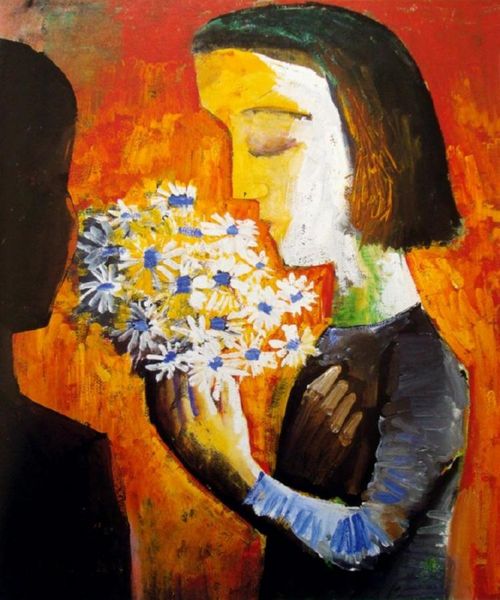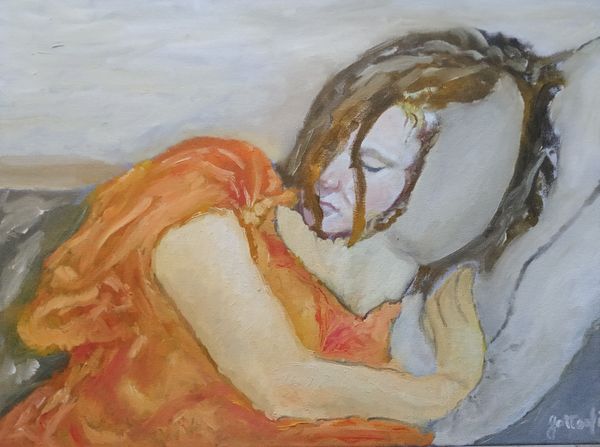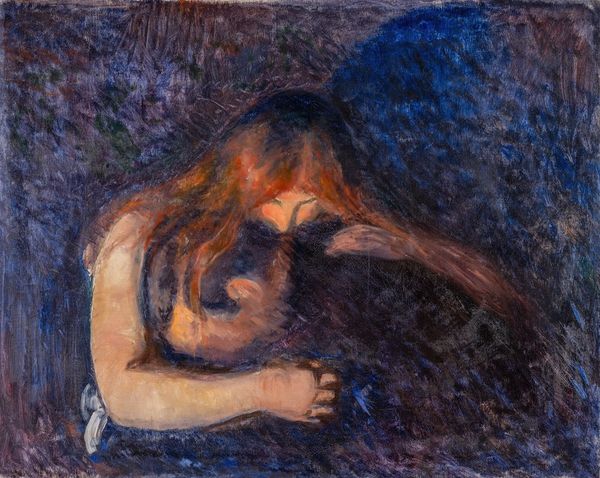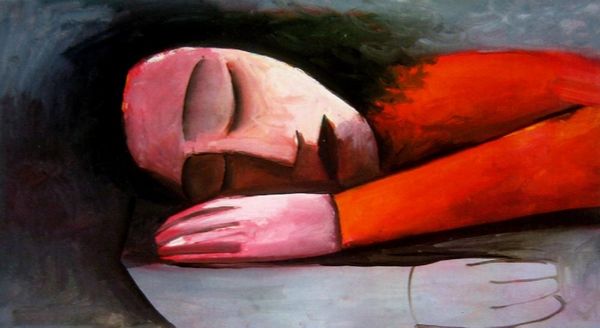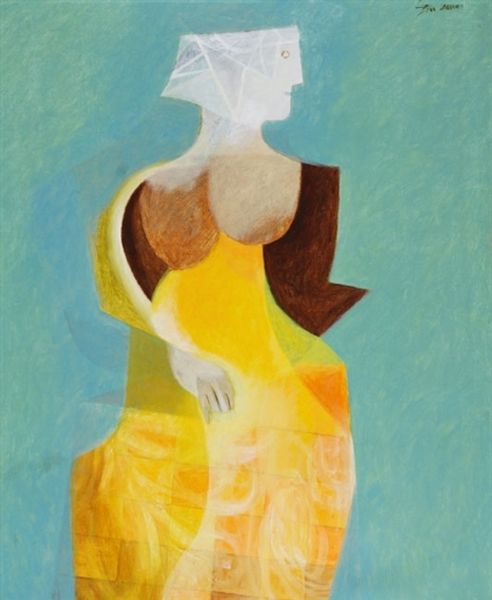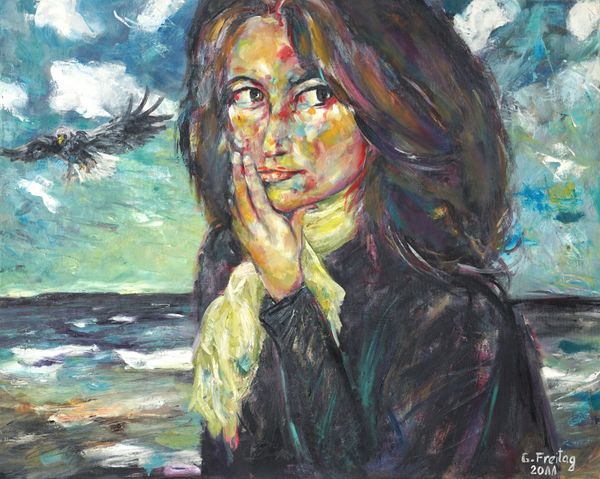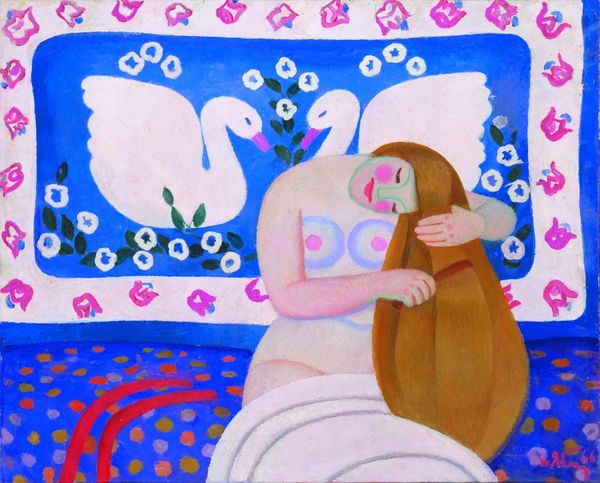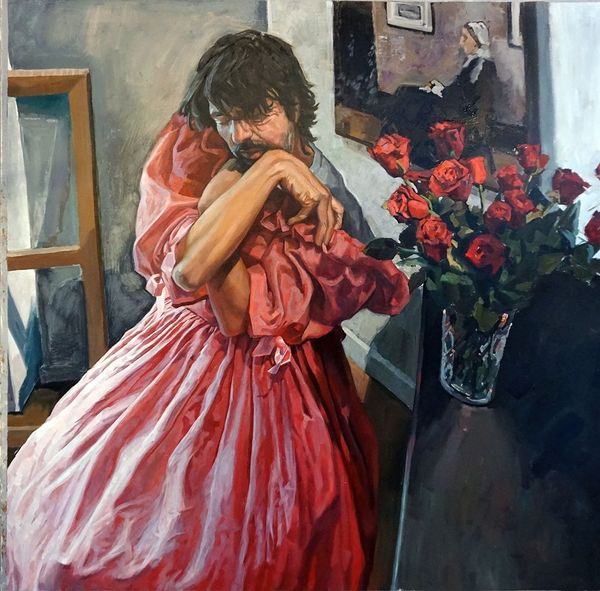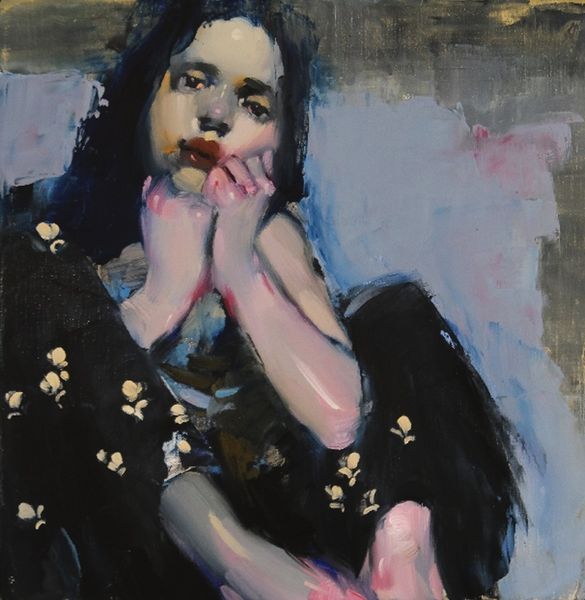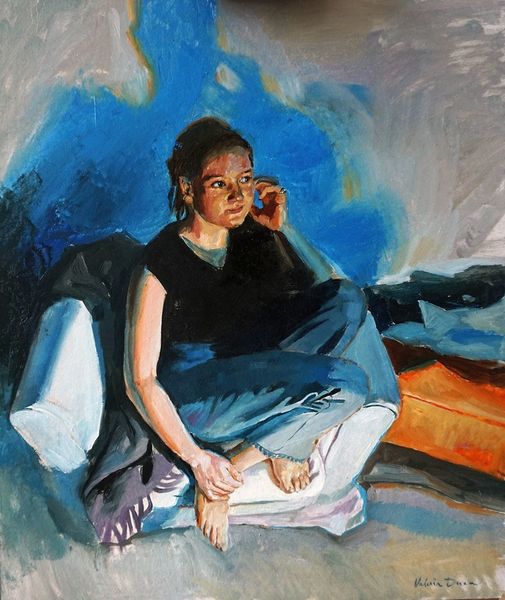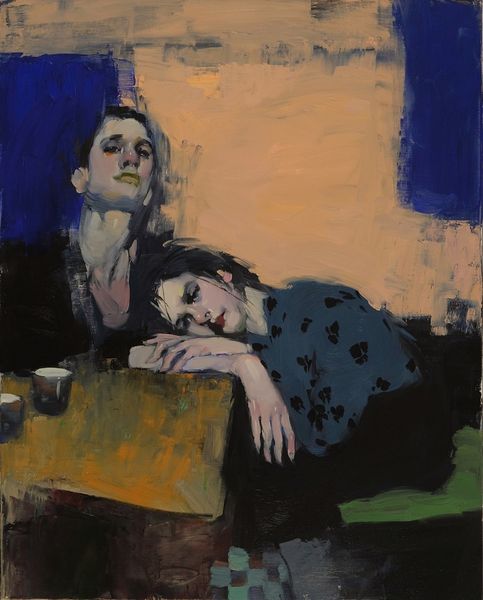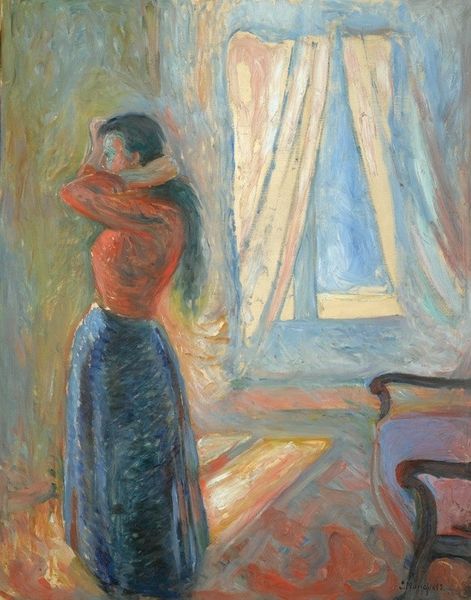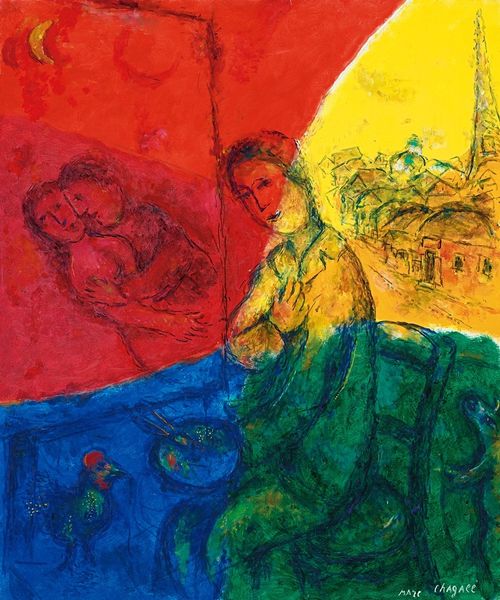
painting, oil-paint
#
portrait
#
painting
#
oil-paint
#
figuration
#
oil painting
#
neo expressionist
#
portrait art
Copyright: Charles Blackman,Fair Use
Curator: Charles Blackman created this intriguing oil painting, "Check Cloth," in 1961. I'm struck immediately by the patterns; they seem almost to vibrate. Editor: Vibrate is right. There's an intense, almost melancholic feeling evoked for me by the hunched figure in contrast with such an aggressively colourful surface design. Curator: I think that interplay is deliberate, yes. The checked fabric, echoed on the table and clothing, frames the solitary figure. It creates a contained domestic sphere—almost trapping, though—that seems to emphasize her introspective state. Editor: Do you think the ‘check’ itself functions as a constraint on expression? I wonder if Blackman might be commenting on societal expectations placed on women during that era. Curator: That's interesting. I tend to focus on how the repetition of patterns provides a structure, even when life feels chaotic. We look to symbols for meaning. Consider also that checkerboard patterns, historically, are linked with fate or games. It makes me wonder what "game" the sitter feels trapped within. Editor: Or maybe what game she refuses to play. There is defiance in the set of her mouth, perhaps. And the colour feels almost Fauvist. It’s pushing at the seams of social conformities. Curator: Perhaps both are simultaneously true: she's caught, and resistant. Look at her gently crossed arms – almost shielding herself but simultaneously calm. The choice of oil paints here, laid on with visible brushstrokes, intensifies that ambivalence, suggesting inner emotional turbulence, yes? Editor: I see that now – it also reminds us this is mediated experience - oil paint, canvas. What really stands out for me is how Blackman used patterns to question, to some extent, women's roles and spaces, beyond just an attractive surface detail. Curator: So, "Check Cloth," beyond being a fascinating piece of artwork on the canvas, serves as a striking emblem of the tensions women encountered during its historical period. Editor: Exactly. I think that adds to the power of this work - a real visual signifier of that turbulent push and pull, I love how the colours feel celebratory and fun, while actually describing someone withdrawn and feeling alone.
Comments
No comments
Be the first to comment and join the conversation on the ultimate creative platform.
